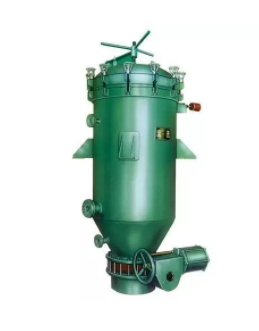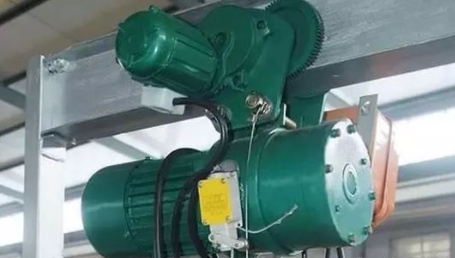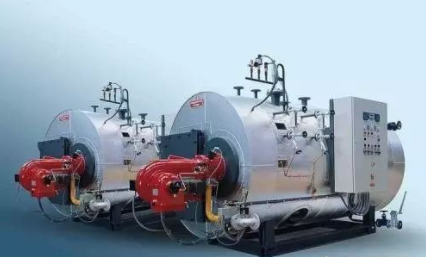Ⅰ.Neutralization and washing risk points and prevention and control measures
1. Risk points: scalds from hot water and steam;
Prevention and control measures: wear safety helmets, safety glasses, anti-scald gloves and other protective equipment; prohibit standing in front of the steam valve and do not overhaul under pressure.
2. Risk points: mechanical damage caused by accidental contact with rotating parts when the motor is running;
Prevention and control measures: ensure that the protective cover is in good condition; keep a safe distance from the rotating part; jog on-site monitoring to ensure that no one approaches.
3. Risk points: the tank body and ladder slides due to oil pollution and stagnant water;
Prevention and control measures: sanitary cleaning of tank tops, wearing safety helmets, safety shoes, protective gloves and other protective equipment; timely cleaning up oil stains and stagnant water.
4. Risk points: the impact of objects caused by the falling of compressed air pipes;
Prevention and control measures: turn off the air source, release the pressure before operation, check whether the compressed air pipeline is installed properly; wear safety helmets, safety eyes and other protective equipment; do not face exposed parts of the human body during use.
5. Risk points: splashes of liquid caustic soda and phosphoric acid, burns caused by alkali and acid;
Prevention and control measures: Wear strong alkali-resistant protective gloves, safety helmets, and safety eyes; emergency water flushing devices are available on site; both ends of the pipeline are fixed according to the process, and the valve is slowly opened for unloading. If leakage is found, it should be closed in time for reinforcement. Open the valve and unload the truck directly with large flow; the surroundings are safely isolated, and irrelevant personnel are prohibited from approaching.
6. Risk point: Leakage of plate heat exchanger;
Prevention and control measures: It is strictly forbidden to be heated on one side; clean and maintain regularly to prevent clogging; operate according to the regulations to prevent the valve from closing backlog; wear safety helmets, safety eyes, anti-scald gloves and other protective equipment when handling.
7. Risk points: high-temperature oil leakage of the centrifuge and splashing of slag discharge;
Prevention and control measures: do not take samples when discharging slag; take samples to prevent the sampling tube from falling off; use protective equipment such as protective glasses, gloves, hard hats, and safety shoes; post warning signs.
8. Risk points: high temperature oil burns;
Prevention and control measures: The cover is not properly closed; the gasket is damaged; it is prohibited to work here when discharging slag; use protective equipment such as protective glasses, gloves, helmets, and safety shoes, and stick a warning sign against acid and alkali burns.
9. Risk points: the soapstock pipeline is purged, and the valve leaks;
Prevention and control measures: wear safety eyes, helmets, protective gloves and other protective equipment; stand on the side of the valve to operate.
10. Risk points: falling when the centrifuge components are lifted;
Prevention and control measures: Isolate the operating point, supervise by special personnel, and prohibit entry of irrelevant personnel; no personnel stand under or pass by when lifting; fix the lifting object according to the lashing process, and ensure that the centrifuge components are well fixed.
11. Risk point: enter the restricted space of each reaction tank to work;
Prevention and control measures: It is forbidden to use non-explosion-proof tools and equipment when opening; all fire sources are prohibited from 5 meters around; ventilation for more than 2 hours before opening; after opening, operators can enter after gas detection is qualified; after opening, use mechanical ventilation to force ventilation, Operators are forbidden to bring in non-explosion-proof electrical appliances (including mobile phones, walkie-talkies, etc.); special personnel are guarded outside to prevent unsafe behaviors.
Ⅱ.Risk points of soybean oil decolorization and prevention and control measures
1. Risk points: white soil addition (white soil dust, fan noise);
Prevention and control measures: wear dust masks, maintain ventilation, and conduct regular occupational disease physical examinations; set up safety warning signs and require personnel entering the area to wear protective earplugs.
2. Risk points: premix tank cleaning (high temperature clay, spontaneous combustion of clay in the tank, lack of oxygen in the tank);
Prevention and control measures: Use protective equipment such as protective glasses, gloves, safety helmets, safety shoes, and do a good job of ventilation, and lower the temperature below 45 degrees before entering; it is forbidden to open the ventilation after production or just shutting down; empty in time to prevent long-term accumulation heat.
3. Risk points: filtration (oil leakage, steam leakage);
Prevention and control measures: Use protective equipment such as protective glasses, gloves, safety helmets, and safety shoes to deal with oil leaks in time; use protective equipment such as protective glasses, gloves, safety helmets, and safety shoes.
4. Risk points: drain tank (high temperature oil leakage, open butterfly valve under pressure);
Prevention and control measures: standardize operating procedures, use protective equipment such as protective glasses, gloves, helmets, and safety shoes; standardize operating procedures and wear protective equipment.
5. Risk points: replacement of filter bag (high temperature oil burns);
Prevention and control measures: Use protective equipment such as protective glasses, gloves, safety helmets, and safety shoes.
6. Risk points: filter plate cleaning (alkali cleaner contacts the skin, high-pressure water damage);
Prevention and control measures: use protective equipment such as protective glasses, gloves, safety helmets, and safety shoes; standardize the operation process and do a good job of safety protection.
7. Risk points: sampling of decolorized oil (scalded);
Prevention and control measures: standardize the operation process and do a good job of safety protection.
8. Risk point: operation and use of electric hoist;
Prevention and control measures: hoisting machinery and operators must hold valid certificates; strictly implement the “ten no-lifting” regulations for lifting; separate the lifting area with warning tapes and have special personnel to prevent unrelated personnel from entering and stop unsafe behaviors; lifting is strictly prohibited People stand under the objects and are too close; the key point is that it is not allowed to lift dangerous goods such as pressure gas cylinders without using a reliable cage; the centrifuge and other loose parts should be stored firmly to prevent dumping and hurting people; the hands and feet of the centrifuge disassembly and installation personnel should be protected. Distance to prevent damage from blows and squeezing.
9. Risk points: enter the restricted space of each reaction tank such as the decolorization tower for operation;
Prevention and control measures: It is forbidden to use non-explosion-proof tools and equipment when opening; all fire sources are prohibited from 5 meters around; ventilation for more than 2 hours before opening; after opening, operators can enter after gas detection is qualified; after opening, use mechanical ventilation to force ventilation, Operators are forbidden to bring in non-explosion-proof electrical appliances (including mobile phones, walkie-talkies, etc.); special personnel are supervised outside to prevent unsafe behaviors
Ⅲ.Soybean oil deodorization risk points and prevention and control measures
1. There are risks: high-temperature heating, high-temperature oil leakage;
Prevention and control measures: Use protective equipment such as protective glasses, gloves, safety helmets, and safety shoes, and post high temperature warning signs.
2. There is a risk: workshop noise;
Prevention and control measures: Set up safety warning signs and require personnel entering the area to wear protective earplugs.
3. There is a risk: diesel (natural gas) leakage;
Prevention and control measures:
(1) Special equipment passes the inspection, obtains the use license, and the operator obtains the operation certificate; strictly implements the operating procedures; the operator conducts daily inspections.
(2) Regular inspections of boilers, safety valves, pressure gauges and other safety components for inspection; check oil pressure and air volume, pay attention to safety inspections of exhaust gas.
4. There is a risk: failure of the high-pressure boiler control system;
Prevention and control measures: boiler equipment and operators hold valid certificates, and other personnel are prohibited from operating; boiler failures are forbidden to continue to use, and must be repaired by professional personnel before acceptance; when the boiler is started, strictly abide by the operating procedures and check it in real time Whether the status is normal, so that problems can be found in time; during production, the boiler and accessories should be checked regularly, such as whether there is oil leakage, whether there is an alarm, whether the monitoring parameters are normal, etc.; the boiler should be maintained or overhauled by professional personnel on a regular basis , To ensure a good safety status.
5. There is a risk: the safety protection device of the high-pressure boiler fails;
Prevention and control measures: special equipment passes the inspection, obtains the use license, and the operator obtains the operation certificate; strictly implements the operating procedures; the operator conducts daily inspections; regularly inspects the boiler, and sends for inspection of safety components such as safety valves and pressure gauges; Oil pressure and air volume, pay attention to the safety inspection of exhaust gas.
6. Risks exist: furnace body and system pipes;
Prevention and control measures: special equipment passes the inspection, obtains the use license, and the operator obtains the operation certificate; strictly implements the operating procedures; the operator conducts daily inspections; regularly inspects the boiler, and sends for inspection of safety components such as safety valves and pressure gauges; Oil pressure and air volume, pay attention to the safety inspection of exhaust gas.
7. Risks exist: clean up the confined space of high-pressure boilers and deodorization towers;
Prevention and control measures: It is forbidden to use non-explosion-proof tools and equipment when opening; all fire sources are prohibited from 5 meters around; ventilation for more than 2 hours before opening; after opening, operators can enter after gas detection is qualified; after opening, use mechanical ventilation to force ventilation, Operators are forbidden to bring in non-explosion-proof electrical appliances (including mobile phones, walkie-talkies, etc.); special personnel are guarded outside to prevent unsafe behaviors.
8. Risks exist: The top of the deodorization tower is opened, and the internal colloidal phospholipids etc. spontaneously ignite, causing a fire;
Prevention and control measures:
(1) Start a special confined space opening permit;
(2) Circulate cooling to ensure that the system temperature is lower than 45 degrees when it is turned on;
(3) Use automatic nitrogen flushing and other measures to break the vacuum;
(4) System improvement, such as Regular cleaning and so on.
The above wonderful content is the sharing of Analysis of production and processing risks in refining workshops and countermeasures by Henan Zhongxing Grain and Oil Machinery Co., Ltd.



